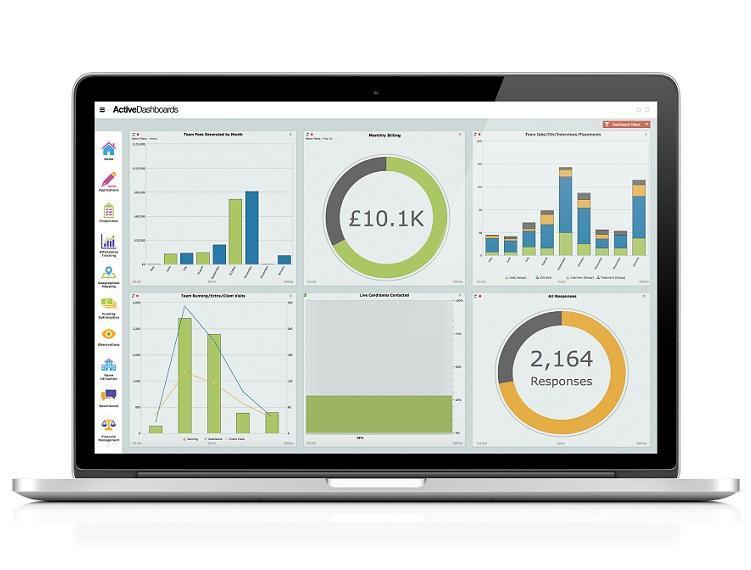KENSINGTON & CHELSEA COLLEGE: ACTIVE DASHBOARDS TECHNOLOGY IMPROVING DATA ANALYTICS

Kensington & Chelsea College, a Further and Higher Education College, committed to maintaining specialist provision for the arts, offers a range of full and part-time courses, including work-based learning and apprenticeships.
The College’s students come from a diverse range of backgrounds including a growing intake of 16–18 year olds. The College operates from two locations in West London; the Chelsea Centre in Chelsea and the Wornington Centre in North Kensington.
THE CHALLENGE
As a result of the Government’s recent Area Reviews, performance management is now a critical focus for all colleges. With the monitoring of the College’s further education standards divided between the Educational Funding Authority and the statutory regulator Ofsted, access to up to date data has never been more important with regards to benchmarking and measurement.
Historically, Kensington & Chelsea College’s suite of internal reports had been developed over a period of time by various authors and as a consequence the College’s reports are now difficult to maintain and provide a limited view of the College data. The College realised that with the need to access real time, accurate information, their existing system was underdelivering and their reporting system needed an upgrade.
Tony Jack, Director of IT, says,
“Our previous reporting system wasn’t the most intuitive so we were seriously behind the curve with our use of data analytics. We therefore needed to find an accessible, easy to use reporting tool to unify our existing materials and deliver real-time connectivity and reporting. It was vital that we were able to provide accurate information to every level of user; from the highest executive level down to the College management team and staff. Due to the vast amount of data that the College produces, we were also looking to have this more meaningfully presented in order to allow us to make quicker and more informed decisions. This would make things far easier to plan ahead and prioritise in the most efficient and cost-effective way.”
The College also needed to collect information simultaneously from multiple sources in order to identify opportunities and highlight issues, with the functionality to drill down to specific details.
“We tried to create our own internal dashboards in the past but with their graphical representation, Dynistics’ Active Dashboards offered a more visual and effective alternative and as the leading product in the market, had a high profile as the ‘go to’ solution in the FE sphere. We believed they offered enough business benefits to warrant the outlay – and we were right,” continues Tony.
IMPLEMENTATION
Kensington & Chelsea College installed Dynistics Active Dashboards in December 2015 and four months later were already seeing tangible results.
“Bringing in an external company certainly helped to simplify and speed up the process,” confirms Tony Jack. “There was a cross-over period of a few months where we had to familiarise ourselves with the new system and have a datadriven mindset. However, once we did, the results were impressive.”
OUTCOME
Kensington & Chelsea College currently uses seven dashboards – finance; applications; enrolments; Key Performance Indicators (KPI) for the board of governors; student attendance and progress; student retention and room utilisation.
Two more; staff utilisation and geomapping, are currently in development. The implementation of Active Dashboards has made quality real-time data readily available organisation-wide and has helped improve individual, departmental and overall College performance.
“As most of our students are only with us for 35 weeks of the year, if you’re having to wait weeks to obtain data to indicate that a particular class or student is having issues, that can have a huge impact on their learning. Therefore, it is critical for colleges to be able to rely on and use real-time data promptly and dynamically and that’s one of the great advantages we’ve found with Dynistics,” says Bill Blythe, Vice Principal for Finance and Resources.
“The dashboards give us up-to-date management information in an easily digestible format, enabling our management team to drive improvements at all levels in quality outcomes for students and highlighting potential areas for development within the college and, thanks to the promptness and accuracy of data, enabling them to act on these at the point of failure,” he continues.
“Active Dashboards have very quickly become a central part of our day,” agrees Tony Jack. “Talk to any member of the management team and they’ll tell you that they’ve become our first port of call in the morning. Previously, we were juggling information silos and out-of-date or missing data but thanks to Active Dashboards it’s now much more straightforward.
“With each member of the management team having data available on their iPad, people are able to pinpoint and extract specific information on the move within seconds. You can see trends forming within a class and act on them immediately. The data generated also makes us ask questions which are vocalised in informed discussion at our weekly management meetings.
“We also have a governance dashboard which tracks the information our governors need to take a strategic overview and strengthen their support and challenge role within the college. So they really are used at all levels.”
Bill Blythe further adds, “This has helped us to develop a new culture of analytics. There has definitely been a new interest in data simply due to its increased visibility within the College.”
BENEFITS
One of the main drivers for using Active Dashboards was to ensure that Kensington & Chelsea College has a clear, single view of student application and attendance rates. This enables the college to compare these sets of data with figures from previous years to help predict future opportunities and make any necessary changes to support enrolment targets and ensure that students are happy with their learning in order to secure student retention and boost achievement. This in turn will ensure that the College meets its financial targets in order to generate increased income.
Bill Blythe says, “It’s still early days but already our attainment, retention and success rates have improved, as well as our student attendance numbers. This is obviously something that we’re looking to build upon throughout this academic year.”
TIME SAVING
Using Active Dashboards has enabled Kensington & Chelsea College to reduce the amount of time spent on face-to-face meetings, emails and phone calls, as much information is now available at the click of a mouse.
It also helps to show up any inconsistencies in the data as and when they occur, enabling specific interventions or remedies to be applied which help ensure that the College and its staff are meeting student expectations.
“Using Active Dashboards has definitely enabled us to streamline processes and use our time more effectively,” says Bill Blythe. “Previously we had to ask for documents and bespoke reports on an ad-hoc basis which was both frustrating and very timeconsuming. Now data is not only available at the click of a mouse, but it is also updated automatically, reducing administration.”
IMPROVED TEACHING QUALITY
“Active Dashboards allow us to get very granular, very quickly, providing greater insight into the student lifecycle. This empowers tutors to identify how well they themselves are performing, review teaching areas and methods, monitor and track individual learners and measure student success,” explains Tony Jack.
Active Dashboards also make it far easier to generate much of the data that Ofsted requires. “Aside from teaching, one of the primary areas on which Ofsted assesses us on, is how we are performing financially,” says Bill Blythe.
“The number of enrolments we receive affects funding; the longer students stay and the more they achieve, the more funding we receive. With the use of data and intelligence so important in Ofsted reports, we envisage that Active Dashboards will help validate the excellent work we’re doing, ideally moving us to a higher Ofsted rating and providing access to programmes that aren’t currently available to us. This would not only have a positive effect in terms of funding, but also the College’s reputation.”
HIGHLIGHTS IRREGULARITIES
Tony Jack adds, “Active Dashboards help highlight any irregularities. For example, at the end of last term we had an issue with our attendance figures. Thanks to Active Dashboards we discovered that the system was incorrectly recording Bank Holidays as missing register days, therefore negatively skewing the figures. As a result, we were able to quickly iron out this issue and bring our data back in line.
SINGLE, REAL-TIME DATA
“Using Active Dashboards has enhanced our ability to prioritise, plan and respond effectively,” says Bill Blythe. “Previously, it had been difficult to readily access historical data but now, each member of staff can see how many applications have been received, which have transferred into enrolments and student success levels. This really helps with future planning.”
FUNDING-FOCUSED
“One of the main drivers in our adoption of Active Dashboards has been funding and Ofsted assessment,” confirms Bill Blythe. “As our funding formula is very complex, Active Dashboards provides a valuable way to keep track of our cash flow and expenditure, including staff costs, to make sure that it’s within budget and flag up any irregularities. With Ofsted assessing us on how we’re performing financially, it is crucial that our figures add up.”
THE FUTURE
In the future, Kensington & Chelsea College plan to grow both the nature and shape of their Active Dashboards to track and monitor performance across all areas of the College to drive up standards of course delivery and attainment and increase student enrolment.
Tony Jack concludes, “We’re working closely with Dynistics to discover how we can replicate customised home screens for different departments, and intend to develop our geomapping dashboard and work alongside the Responsive College Unit to find out which areas we can develop to ensure that we’re meeting the needs of the local community and becoming even more competitive.”











Responses